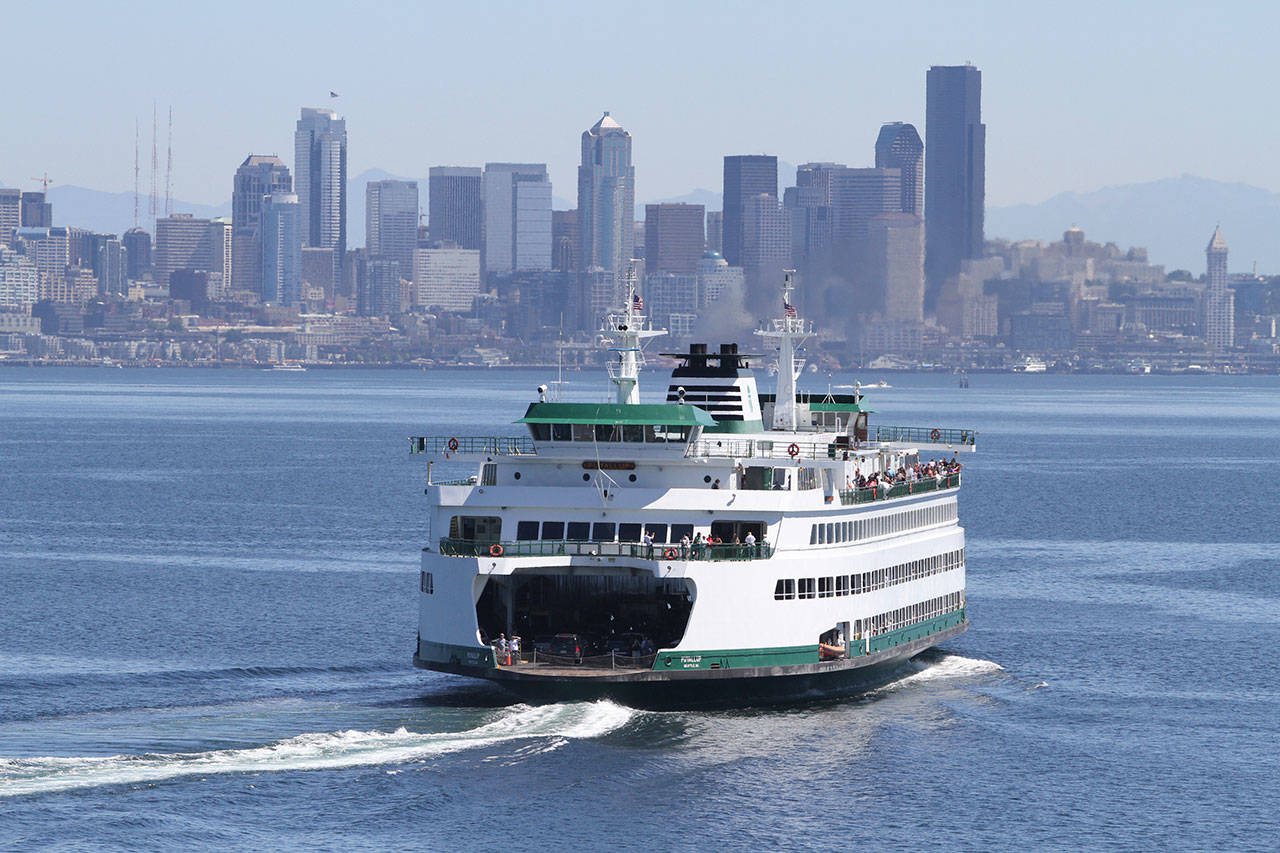If you bring a bike onboard a ferry boat, please remember to take it off again.
That may seem like obvious advice, but according to a recent announcement from the U.S. Coast Guard, it is sorely needed regardless.
There have been 12 incidents of bicycles being left aboard ferries in the last 18 months, according to Coast Guard officials. Three of those were ride-share bikes, which pose an even more complex problem for Washington State Ferry workers and Coast Guard responders.
What is the route most commonly affected?
“We see the most bikes left behind on the Bainbridge route,” said WSF spokesman Ian Sterling. “But they occur system-wide.”
Every abandoned bike must be assumed to be a missing — perhaps even overboard — person until proven otherwise.
“It’s something that is an issue,” said Chief Petty Officer David Mosley, U.S. Coast Guard 13th District Public Affairs. “We have to respond as if a life is in danger.”
Such a response is complex and sometimes massive, including search vessels in the water and air, and also maybe beseeching the help of able mariners on their own boats nearby.
“We will respond until we can … confirm the person is safe,” Mosley said.
The search that results from an abandoned bike is also costly, both to the Coast Guard and WSF, officials said. It causes “a significant drain on limited resources.”
It also impacts other riders, including those who depend on the ferry to get to work.
“Additionally,” Coast Guard officials said, “the search reduces response capabilities, risking the lives of those who genuinely need help.”
Recently, a ride-share bike was left abandoned on the Bainbridge route. The resulting search for its missing owner cost more than $17,000 in helicopter and crew costs, according to the Coast Guard.
It was eventually found that no person had fallen overboard. That, typically, is the ultimate result of such an occurrence. Also typical: that price tag.
“It’s not a cheap thing,” Mosley explained.
And, it’s getting more common.
“At WSF, we’ve seen just shy of one missing bicyclist or car driver averaging just under once a month over the last two years,” Sterling said.
As the weather gets dependably nicer, WSF officials fear the situation will only get worse.
“I can tell you that we’ve seen abandoned bikes on each of the past two weekends,” Sterling said earlier this week. “The most recent a private bike up in the San Juan Islands, I believe, and the other, a share bike on the Bainbridge route, that sparked the $17,000 Coast Guard search on March 31. It also delayed a midday sailing out of Bainbridge significantly.”
In addition to the increasingly friendly weather and the start of bicycle season in earnest is the relatively new complication of ride-share bikes: the brightly colored rental bicycles so common in Seattle.
“Ride-share bikes are more of a concern,” Mosely said. “We’ve had an increase in the last few years.”
Hard as it is to ascertain the identity of the owner of a normal abandoned bike, Mosely explained, ride-share bikes are all the more difficult because they are transferred user-to-user so fluidly, and uncovering the identity of the current user will most likely involve contacting the company that owns the bike.
“Share bikes are relatively new to the scene and we support the Coast Guard in their efforts to educate the public about how to use the bikes if a customer chooses to bring one aboard a ferry,” Sterling said. “Don’t leave it behind.”
In addition to not abandoning your bike — be it yours or a rental — the Coast Guard encourages riders to put some sort of contact information on their personal bicycle, as well as paddle boards, canoes and kayaks, too. They also are a problem when they are blown or float away from where they are docked and result in the same emergency response.


